by Scott G. Ward, NCBG Research Botanist
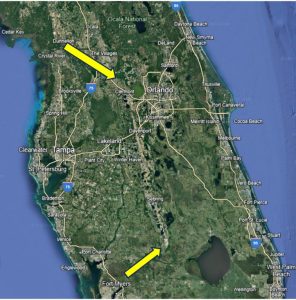
There is perhaps no better summary of the peril of the Lake Wales Ridge than Turner et al. (2006). In their report “State of the Scrub,” the authors lay out a detailed framework of conservation needs for the globally endangered Florida scrub ecosystem occurring on the Lake Wales Ridge. Even with the best intentions and optimal land acquisition scenarios, it was estimated that only 7% of the original coverage of habitat on the LWR would be preserved in perpetuity. The explosion of orange grove and residential development in the second half of the 20th century would push a number of already rare species closer to extinction, but key land acquisition and research efforts by a few interested groups were crucial in the long term protection of remaining scrubs and the unique species embedded within.
Background
The Lake Wales Ridge (LWR) is the Florida Peninsula’s most prominent upland feature, easily apparent on satellite imagery (Fig. 1) due to the prominence of exposed white and yellow sands running like a spine down the state. Spanning more than 100 miles long and more than 11 miles wide in some areas (see Weekley et al. 2008), the LWR is a relict of warmer climatic periods and higher sea levels depositing deep, ancient dunes that remained unsubmerged in subsequent warming and cooling periods. The result can be seen today in the remnants that remain. Deep, sandy, and very dry (xeric) scrub habitats lay interlaid with various flatwoods, savannas, sandhills, ponds, and other wetlands. The unique forms of life still persisting on the LWR weave an intricate tale of evolution, and give us hints about the persistence of life; this tale available to those with enough determination and interest to investigate (e.g., Germain-Aubrey et al. 2014).
Florida scrub, what is it?
Florida scrub is a very dry (xeric), sandy upland plant habitat characterized by the dominance of low-growing palms (Serenoa repens, Sabal etonia), sand pine (Pinus clausa), scrubby oaks (Quercus myrtifolia, Q. inopina, Q. geminata, Q. chapmanii), and heath shrubs (e.g., Lyonia fruticosa, Ceratiola ericoides; see Abrahamson et al. 1984 for an early classification scheme of scrub habitats).
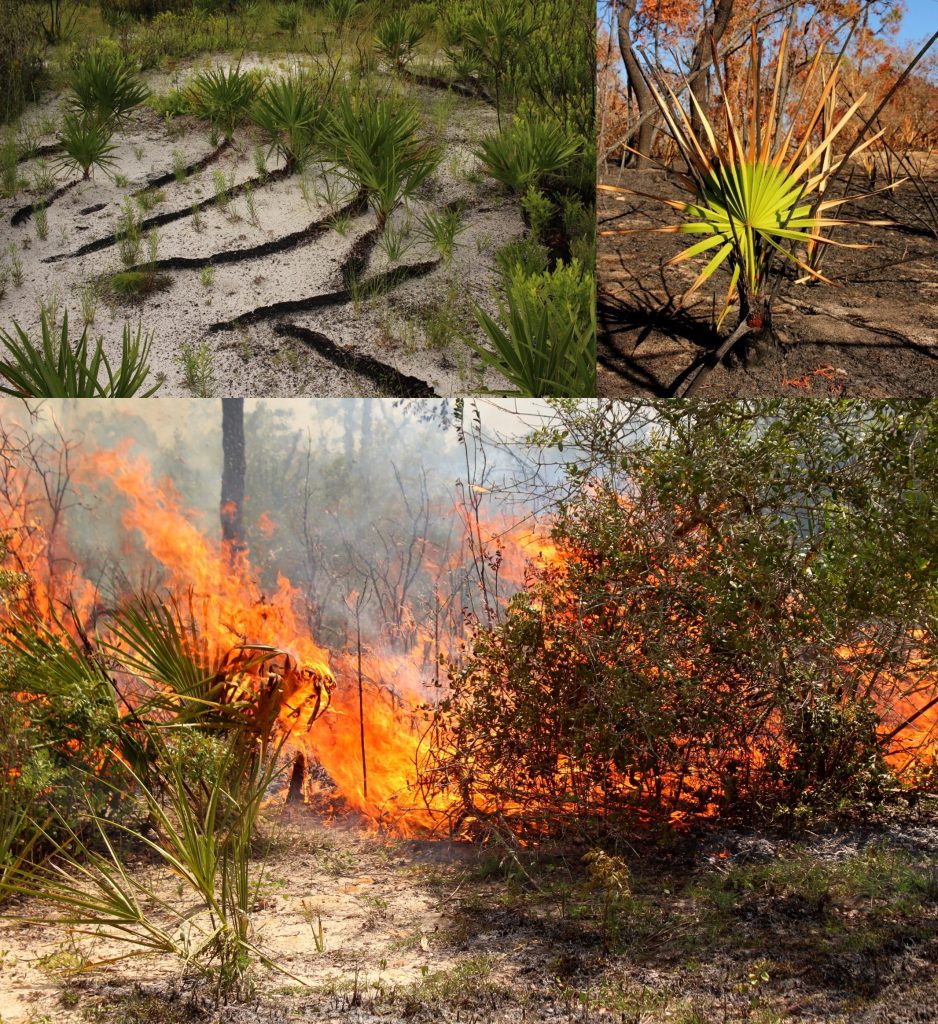
Florida scrub and its associated habitats burn relatively frequently, with fire returns spanning anywhere from a few years in drier sandhills to decades in Rosemary scrub. And while species richness (the number of species present in a given area or habitat) is somewhat low in the driest and most nutrient-poor habitats, the limited range of many plants and the low-growing, fire-adapted stature elevates Florida scrub as an especially unique member in the globally rare scrub-club. Furthermore, a suite of additional environmental factors ensure the maintenance of open sand gaps that garner much attention from ecologists due to the abundance of lichens, soil crusts, and an assortment of herbaceous plants, many of which can only be found in central Florida (Fig. 3). Specifically, at least 23 plants rely on the Lake Wales Ridge for their survival, see below (Endemism and Research) for further discussion.
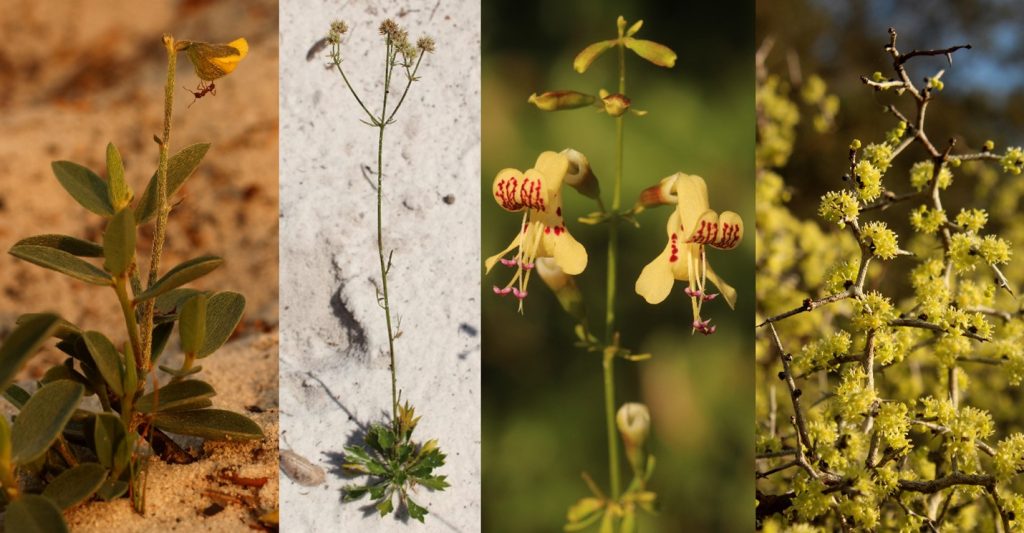
But, this rarity can often be traced back to forces that have molded the LWR ecosystem into what we see today, specifically a boom in development that prioritized housing and orange groves over scrub protection (Fig. 4). But alas, conservation strategists would congregate and set forth initiatives to ensure protection for the parcels that remained.
Conservation
With post-war development exploding in a state previously deemed by many Americans as unfit (or at least very uncomfortable) to live in year-round, agencies such as The Nature Conservancy, Archbold Biological Station, and an assortment of state agencies implemented plans to survey, assess, and prioritize protection for the remaining parcels of scrub on the Lake Wales Ridge. Large parcels had already been protected in perpetuity by as early as 1941 (Archbold Biological Station) and later in 1971 and 1984 (Tiger Creek Preserve, Lake Wales Ridge State Forest, respectively; Fig. 5), but further collaboration between these agencies would also ensure the protection of the many small preserves tucked between (Fig. 4). With the initiation of the CARL program, its evolution into Florida Forever and the modern-day Florida Wildlife Corridor, biologists continue to work fast to protect what remains of Florida scrub and elsewhere, despite the more than 300,000 people moving to the state each year.
![Fig. 4. Left: Managed natural areas of the southern Lake Wales Ridge (the ridge colored in light grey) as of 2008 (left picture; map courtesy of Weekley et al. [2008]). Many areas were and still are only partially protected (darker red parcels). The two most concentrated residential areas on the southern LWR include Sebring northward and Lake Placid southward, but many residential lots and orange groves dominate the landscape. For instance, see right aerial image (courtesy of Google Maps), where remaining tracks of Carter Creek (far right) are all that remain of an area otherwise converted to neighborhoods or orange groves (left half of aerial).](https://ncbg.unc.edu/wp-content/uploads/sites/963/2024/01/Fig.-4_Weekley-and-current-map-1024x786.jpg)
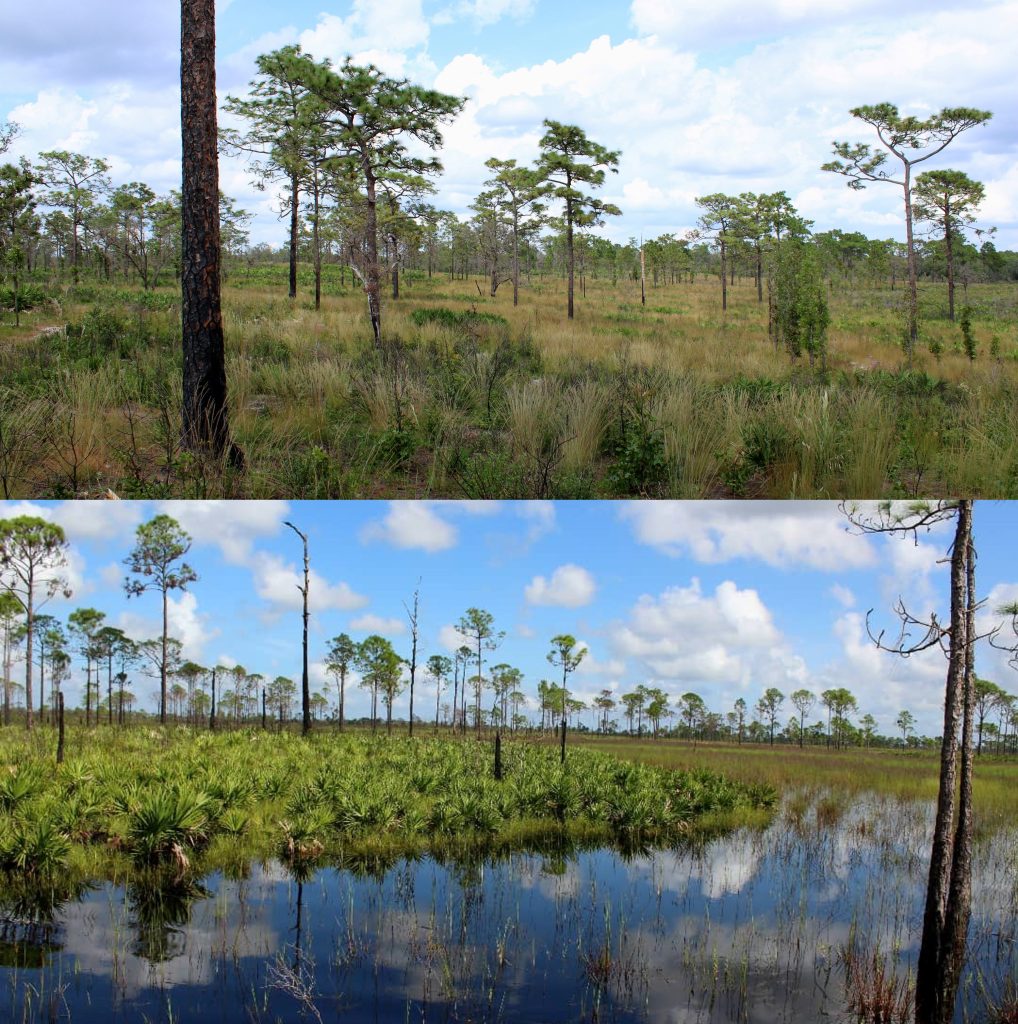
Endemism and Research
Much has been revealed regarding the rare plants of the Lake Wales Ridge and their life histories, due to seminal work set forth by early researchers and botanical explorers of Florida Scrub. Of the 37 plant taxa initially listed as LWR endemics in Sorrie and Weakley (2001) and 28 focal plant species covered in Turner et al. (2006), it is apparent that for 32 species, half or more of their populations occur on the ridge, and of these, 23 plant taxa require the ridge for 90% or more of their populations. Put simply, these 23 plants are unquestionably endemic! Another way to think of this is that the LWR ecosystem provides the sole habitat for numerous plant and assorted animal species that would otherwise go extinct.
And of the scrubs that remain, research is still uncovering important aspects of rare plant life history and reproduction cycles (Weekley and Race 2001; Koontz et al. 2017), microbial, animal, and arthropod diversity (Fitzpatrick and Bowman 2016; Carrel and Deyrup 2019; David et al. 2023), and vegetation responses to disturbance and fire over time (Menges et al. 2020; Abrahamson et al. 2021). Much research has helped the world and scientific community to better understand the Lake Wales Ridge, but certainly much is still to be learned.
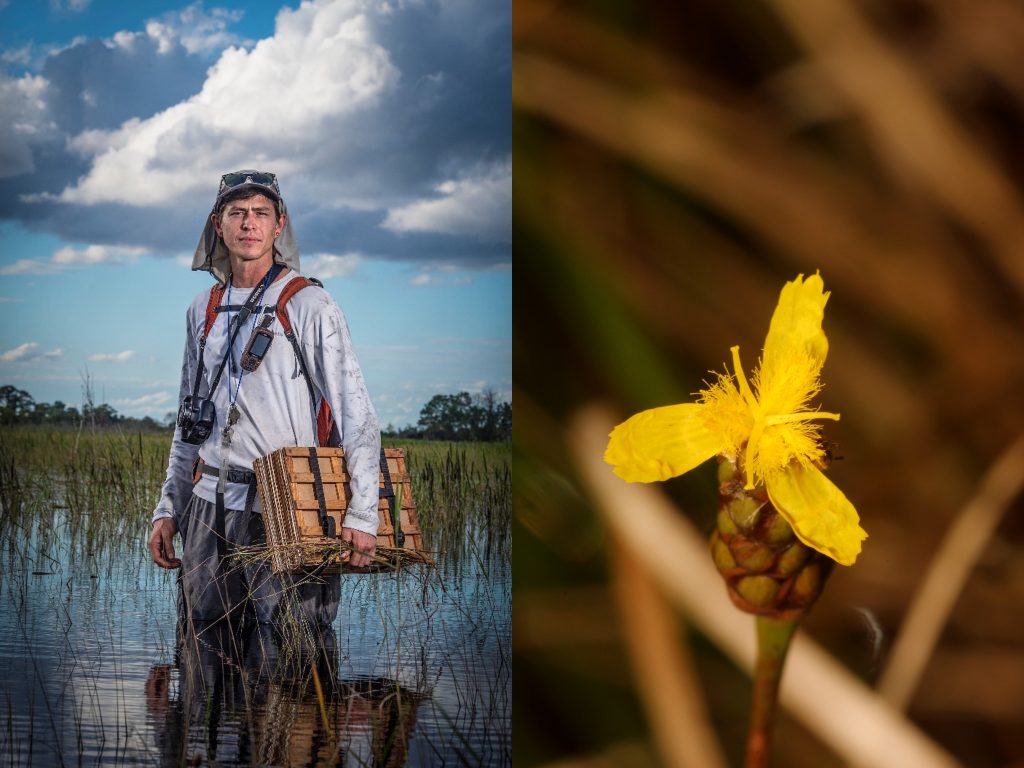
Sources cited in bold (and further reading not in bold):
Abrahamson, W. G., A. F. Johnson, J. N. Layne, and P. A. Peroni. 1984. Vegetation of the Archbold Biological Station, Florida: An Example of the Southern Lake Wales Ridge. Florida Scientist 47:209–250.
Abrahamson, W.G., Abrahamson, C.R. and Keller, M.A., 2021. Lessons from four decades of monitoring vegetation and fire: maintaining diversity and resilience in Florida’s uplands. Ecological Monographs, 91(2), p.e01444.
Bridges, E.L. and Orzell, S.L., 2003. Two new species and a new combination in southeastern United States Xyris (Xyridaceae) from Florida. Novon 1:16-25.
Carrel, J. E., and M. Deyrup. 2019. Analysis of Body Size, Web Size, and Diet in Two Congeneric Orb-Weaving Spiders (Araneae: Araneidae) Syntopic in Florida Scrub. Florida Entomologist 102:388–394.
Corogin, P. T., and W. S. Judd. 2009. Floristic Inventory of Tiger Creek Preserve and Saddle Blanket Scrub Preserve, Polk County, Florida. Rhodora 111:448–502.
David, A. S., D. J. Hernandez, E. S. Menges, V. L. Sclater, M. E. Afkhami, and C. A. Searcy. 2023. Heterogeneous landscape promotes distinct microbial communities in an imperiled scrub ecosystem. Mycologia 115:739–748.
Fitzpatrick, J.W. and Bowman, R., 2016. Florida scrub-jays: oversized territories and group defense in a fire-maintained habitat. Cooperative breeding in vertebrates: studies of ecology, evolution, and behavior, 77.
Germain-Aubrey, C. C., P. S. Soltis, K. M. Neubig, T. Thurston, D. E. Soltis, and M. A. Gitzendanner. 2014. Using Comparative Biogeography to Retrace the Origins of an Ecosystem: The Case of Four Plants Endemic to the Central Florida Scrub. International Journal of Plant Sciences 175:418–431.
Koontz, S. M., C. W. Weekley, S. J. Haller Crate, and E. S. Menges. 2017. Patterns of chasmogamy and cleistogamy, a mixed-mating strategy in an endangered perennial. AoB PLANTS 9:plx059.
Menges, E.S., 2007. Integrating demography and fire management: an example from Florida scrub. Australian Journal of Botany, 55:261-272.
Menges, E.S., Smith, S.A., Olano, J.M., Schafer, J.L., Clarke, G. and Main, K., 2020. Effects of frequent fire and mowing on resprouting shrubs of Florida scrub, USA. Fire Ecology, 16:1-17.
Smith, S.A. and Menges, E.S., 2016. Population dynamics and life history of Euphorbia rosescens, a perennial herb endemic to Florida scrub. PloS one, 11(7), p.e0160014.
Sorrie, B. A., and A. S. Weakley. 2001. Coastal Plain Vascular Plant Endemics: Phytogeographic Patterns. Castanea 66:50–82.
Turner, W.R., Wilcove, D.S. and Swain, H.M., 2006. State of the Scrub. Conservation progress, management responsibilities, and land acquisition priorities for imperiled species of Florida’s Lake Wales Ridge. Archbold Biological Station Report, Venus, Florida.
Weekley, C. W., E. S. Menges, and R. L. Pickert. 2008. An Ecological Map of Florida’s Lake Wales Ridge: A New Boundary Delineation and an Assessment of Post-Columbian Habitat Loss. Florida Scientist 71:45–64.
Weekley, C. W., and T. Race. 2001. The breeding system of Ziziphus celata Judd and D.W. Hall (Rhamnaceae), a rare endemic plant of the Lake Wales Ridge, Florida, USA: implications for recovery. Biological Conservation 100:207–213.
Wilder, G. J., J. M. McCollom, and N. J. Bissett. 2019. A Floristic Inventory of the Holmes Avenue Tract (Highlands County), Florida,